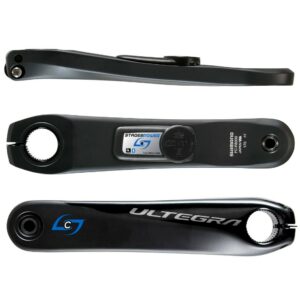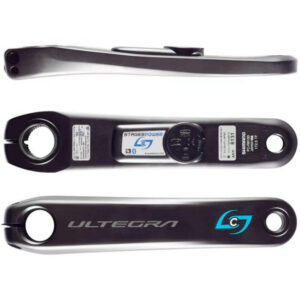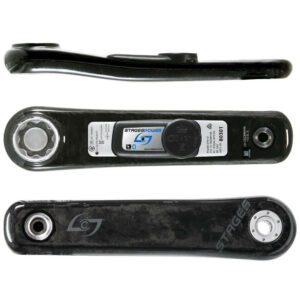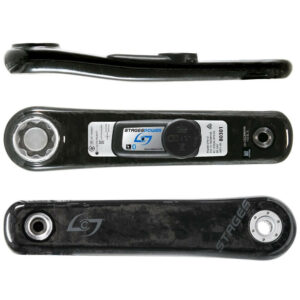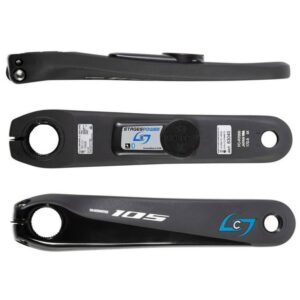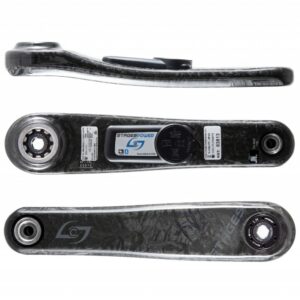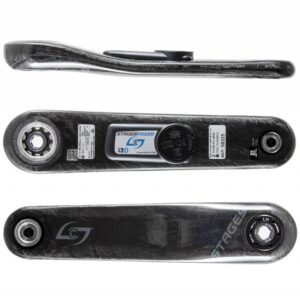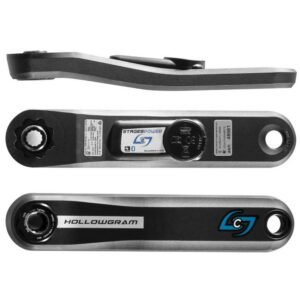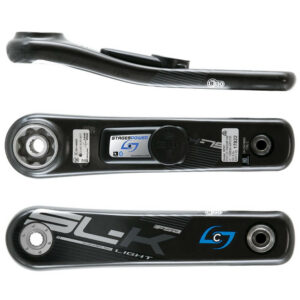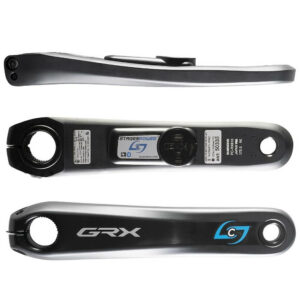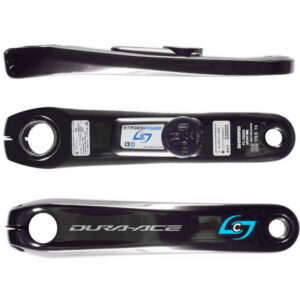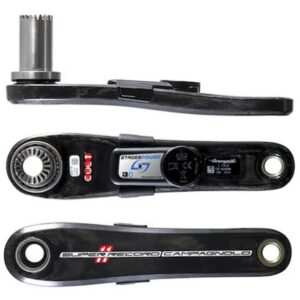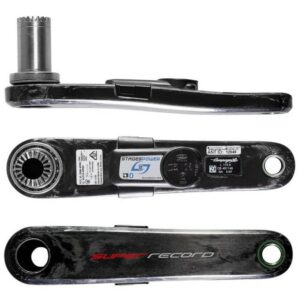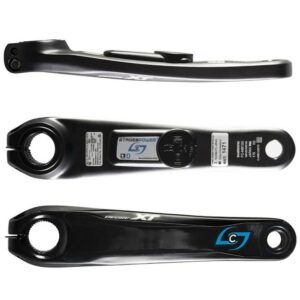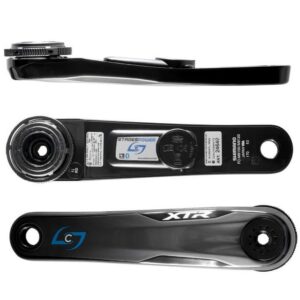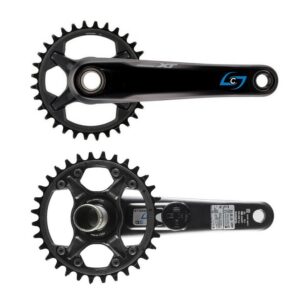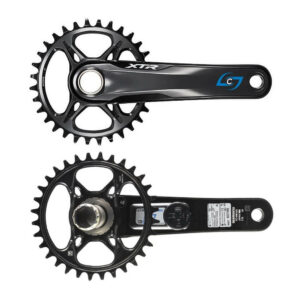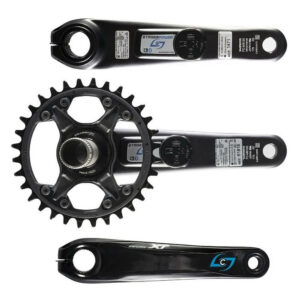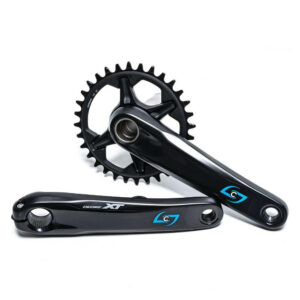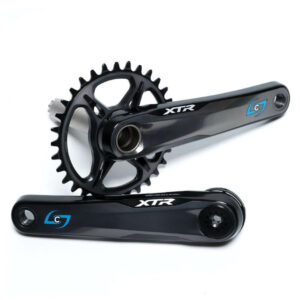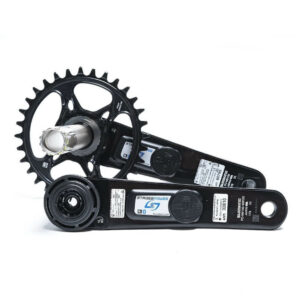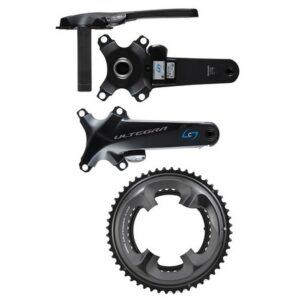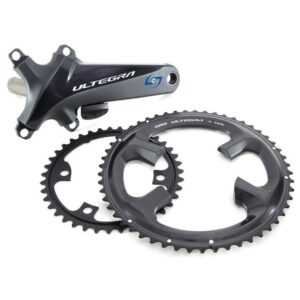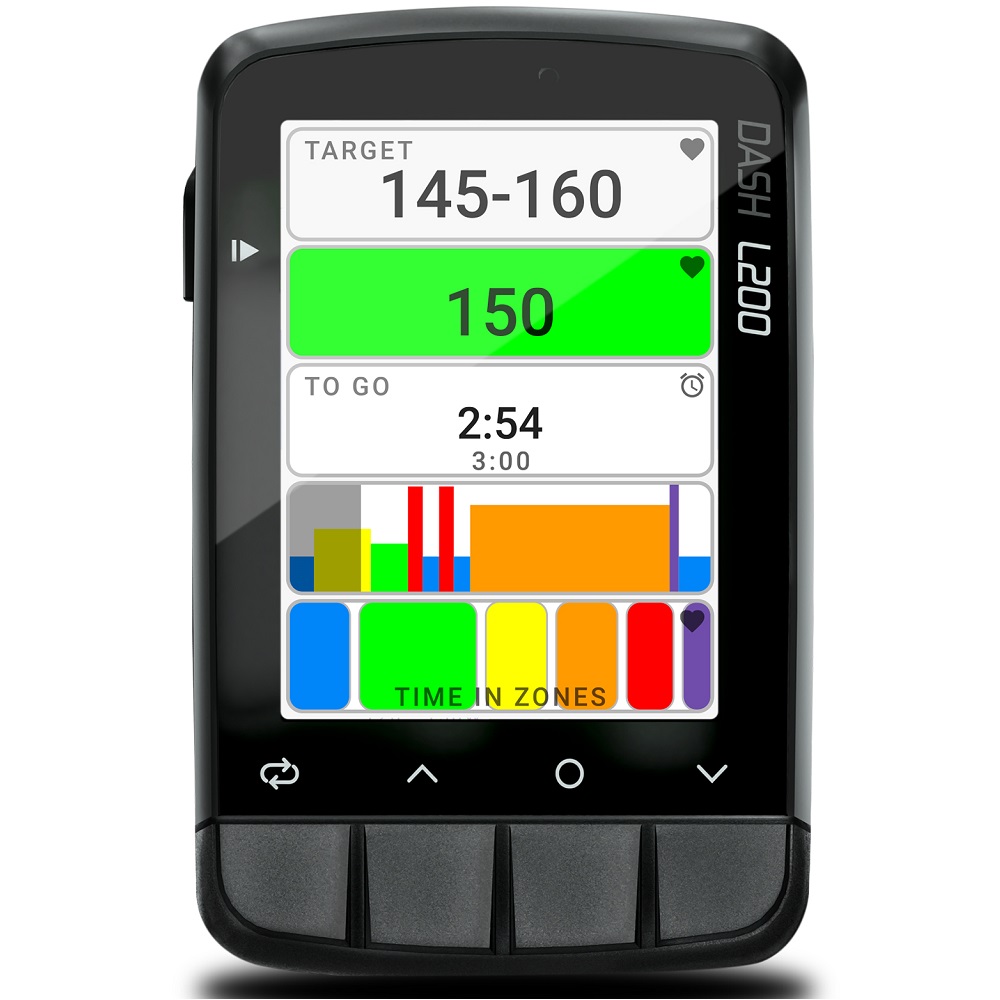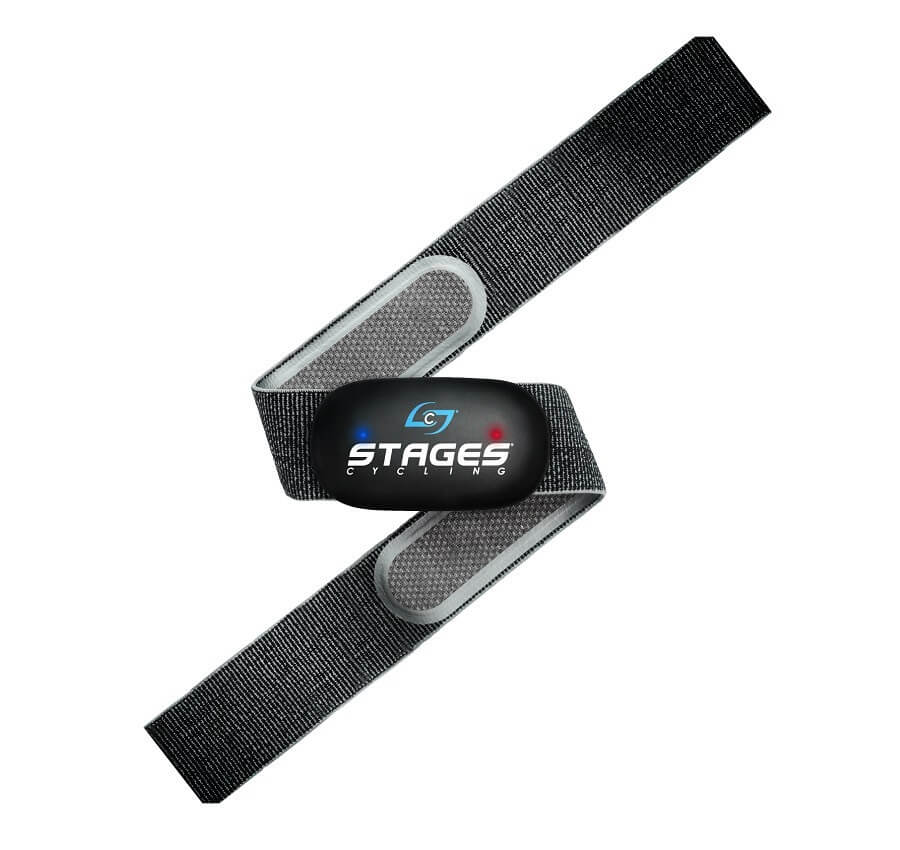Stages Cycling is known for their left side crank arm power meters. In fact, they were the first company to make a left side crank arm power meter. They are now on the 3rd generation of Stages power meters. They currently make left and ride side crank arms as well as dual-sided cranksets. Stages Cycling power meters are lightweight, easy to install and feature 200 hours of battery life. Stages makes models for Shimano, Campagnolo, FSA, Cannondale, SRAM, Specialized, Easton and Race Face cranksets.
Additional Stages Cycling Power Meter Info:
Installation
Installation of Stages left crank arms simply involves removing your current crank arm and installing the Stages in its place. Total installation time is usually less than 5 minutes.
Complete Stages cranksets take a bit more work as you have to swap out your entire crankset. However assuming you have insured compatibility with your bike frame – it’s pretty simple.
Weight
Stages power meters are one of the lightest available. The sensors add just 20 grams of weight to your crank arm, the equivalent of about 20 paperclips. If you opt for a dual-sided crankset, you would be adding about 40 grams, as these units have a power sensor on both the left and right crank arms.
Power Measurement
Stages left side only crank arms measure left leg power and double the value to calculate total power. This is how all single-sided power meters work. Assuming you do not have a large leg imbalance (in terms of power), this is an accurate way to measure power.
Complete Stages cranksets such as the Shimano Ultegra R8000 and DURA-ACE 9100, measure power from both legs. They are also able to determine independent left/right power.
Special Features
One of the great things about Stages power meters is their broad selection. They make a left side crank arm for almost any crankset. In addition, with models starting at $325, they are one of the most affordable, ready to ride direct force power meters available. They are also extremely lightweight. These power meters only add about 20 grams of weight to your crankset.
Batteries
Stages power meters use CR2032 batteries. CR2032 batteries are cheap and easy to find. Battery life is approximately 200 hours, quite good for a battery of this type.
Communication Protocol
These power meters transmit data via both the ANT+ and Bluetooth SMART wireless protocols. This means they are compatible with any bike computer, smart phone or tablet. It also means you can easily connect it to popular training apps such as Zwift.
Accuracy
All Stages power meters are accurate to within +/- 1.5%. This is in-line with most power meters on the market.
Cadence Detection
Cadence is measured using an accelerometer. An accelerometer is an electronic device that is housed inside the power sensor and measures your pedaling rate.
Warranty
Stages offers a one-year warranty which covers the product from defects in material and workmanship. We note their warranty support is quite good should you have any issues with your power meter.
FAQ:
How does a Stages power meter work?
Stages Cycling bonds a strain gauge as well as a battery and some electronics onto the inside of the left- and/or right-side crank arm. A strain gauge is a tiny electronic device whose electrical resistance varies depending on how much resistance (strain) is put on them. In the case of a Stages crank arm for example, it measures how much your crank arm is flexing when you ride. The power meter converts this flex into a power or torque reading that is sent wirelessly to your handlebar mounted bike computer where you can view your power in real-time.
Will a Stages power meter fit my bike?
There are two parts to this question. The first is in regards to crankset compatibility. Stages makes a number of different power meters that fit on different cranks. You must be sure you purchase the correct power meter based on what crankset you have on your bicycle. Secondly, you need to make sure your frame can fit a crank-arm based power meter on your bike. This means you need to make sure there is the necessary clearance (10 mm) between the left crank arm and your chainstay – and that you don’t have a chainstay mounted rear brake. Please refer to the image below.
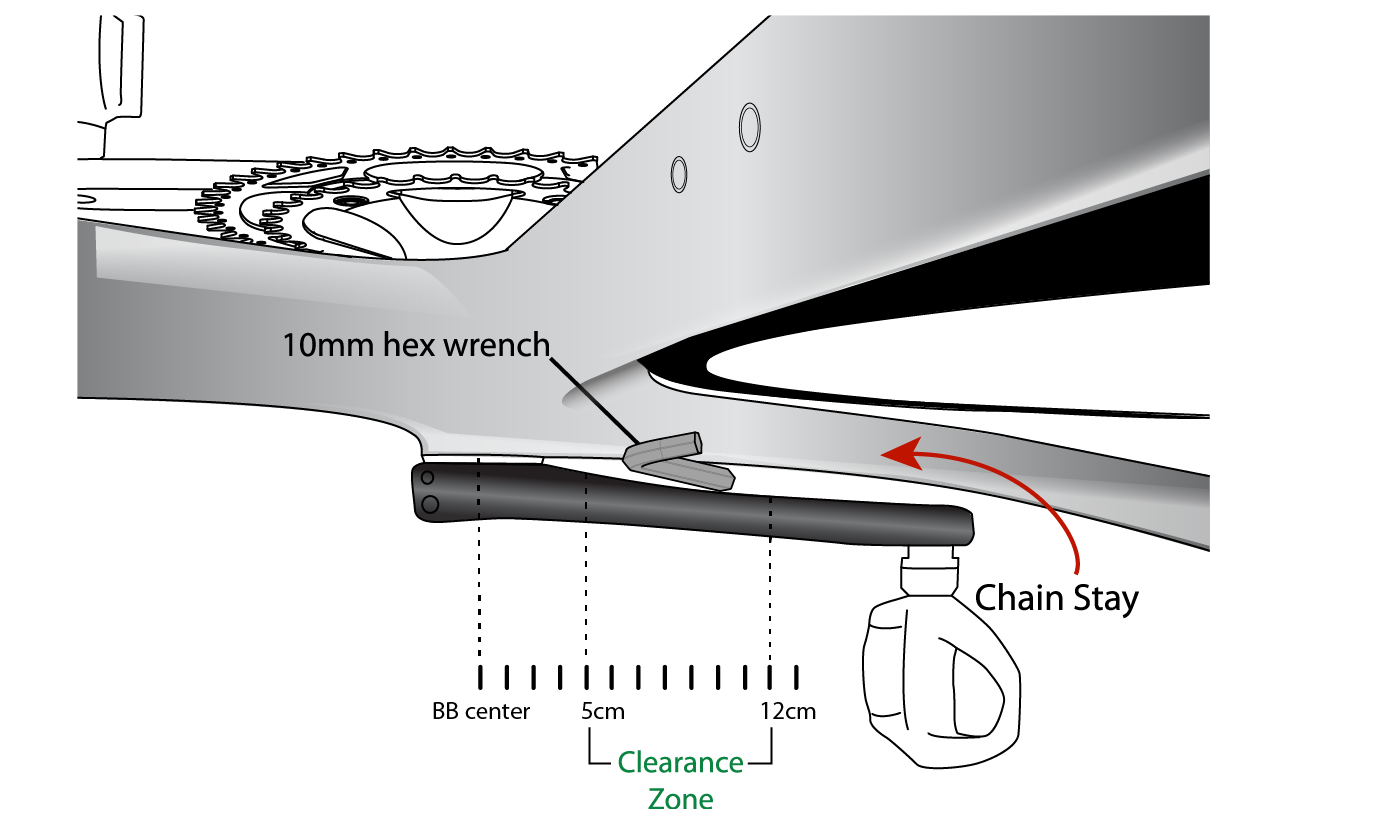
Are Stages power meters accurate?
Yes. Stages units are accurate to within +/- 1.5%. The industry average for power meter accuracy is 1.0% to 2.0% so this is in-line with most power meters on the market.
How long does a Stages power meter battery last?
The battery on a Stages power meter will last for 200 or more hours.
What head units does a Stages power meter work with?
You can use these power meters with any ANT+ enabled head unit, as well as with a smart phone using Bluetooth SMART.
How do you change the battery on a Stages power meter?
You can change the battery on a Stages very easy. For left road and MTB crank arms, as well as for right MTB crank arms, there is a small, round battery door that pops off, exposing the CR2032 battery. For right side road power meters, there is a small door that is removed by unscrewing two small screws. You can change a Stages battery in only a couple of minutes.
Does a Stages power meter measure speed?
No. A Stages power meter measures both power and cadence. Speed is measured by the GPS in your bicycle computer. You can also choose to add a speed sensor to your bike should you wish.
Please see our Stages FAQ for more information on Stages power meters and accessories.
-
Stages Shimano Ultegra R8000 Power Meter
Original price was: $389.99.$331.99Current price is: $331.99.Stages Cycling performance on Shimano's best-selling R8000 crank arm Please see our note below on Stages Rider Support -
Stages Carbon for FSA 386 EVO Power Meter
Original price was: $559.99.$475.99Current price is: $475.99.Bringing Stages power to carbon FSA 386 EVO cranks! Please see our note below on Stages Rider Support -
Stages Carbon for SRAM BB30 Power Meter
$475.99 – $539.99Made specifically to work with SRAM, Easton and Race Face cranksets Please see our note below on Stages Rider Support -
Stages Carbon GXP for SRAM MTB Power Meter
Original price was: $559.99.$475.99Current price is: $475.99.Made specifically to work SRAM 1x and 2x GXP MTB cranks Please see our note below on Stages Rider Support -
Stages Carbon GXP for SRAM Road Power Meter
Original price was: $559.99.$475.99Current price is: $475.99.Made specifically to work with SRAM GXP road cranks Please see our note below on Stages Rider Support -
Stages Cannondale Hollowgram Si Power Meter
Original price was: $409.99.$348.99Current price is: $348.99.Stages power for your Cannondale Hollowgram Si crank! Please see our note below on Stages Rider Support -
Stages FSA SL-K BB30 Power Meter
Original price was: $559.99.$475.99Current price is: $475.99.Award winning Stages power for FSA and Vision BB30 cranks Please see our note below on Stages Rider Support -
Stages Shimano DURA-ACE 9200 Power Meter
Original price was: $514.99.$437.99Current price is: $437.99.Stages Cycling performance on Shimano’s top-end DA9200 crank arm! Please see our note below on Stages Rider Support -
Stages Carbon Campagnolo Super Record Power Meter 11S
Original price was: $849.99.$722.99Current price is: $722.99.Stages power on Campagnolo's top of the line Super Record crank arm! Please see our note below on Stages Rider Support -
Stages Carbon Campagnolo Super Record Power Meter 12S
Original price was: $924.99.$786.99Current price is: $786.99.Stages power on Campagnolo's top of the line Super Record crank arm! Please see our note below on Stages Rider Support -
Stages Shimano XTR M9100/M9120 Power Meter
Original price was: $589.99.$501.99Current price is: $501.99.Add Stages power to your Shimano M9100 or M9120 model crankset Please see our note below on Stages Rider Support -
Stages Shimano XT M8120 Driveside Power Meter
Original price was: $494.99.$420.99Current price is: $420.99.Stages power on a Shimano driveside XT M8120 crank arm Please see our note below on Stages Rider Support -
Stages Shimano XTR M9120 Driveside Power Meter
Original price was: $749.99.$637.99Current price is: $637.99.Stages power on a Shimano driveside XTR M9120 crank arm Please see our note below on Stages Rider Support -
Stages Shimano XT M8120 Dual-Sided Crankset
Original price was: $814.99.$692.99Current price is: $692.99.Stages dual-sided power on a Shimano XT M8120 crankset Please see our note below on Stages Rider Support -
Stages Shimano XTR M9120 Dual-Sided Crankset
Original price was: $1,339.99.$1,138.99Current price is: $1,138.99.Stages dual-sided power on a Shimano XTR M9120 crankset Please see our note below on Stages Rider Support -
Stages Shimano Ultegra R8000 Right Side Power Meter
Original price was: $494.99.$420.99Current price is: $420.99.Stages power on a Shimano Ultegra R8000 right side crank arm Please see our note below on Stages Rider Support

